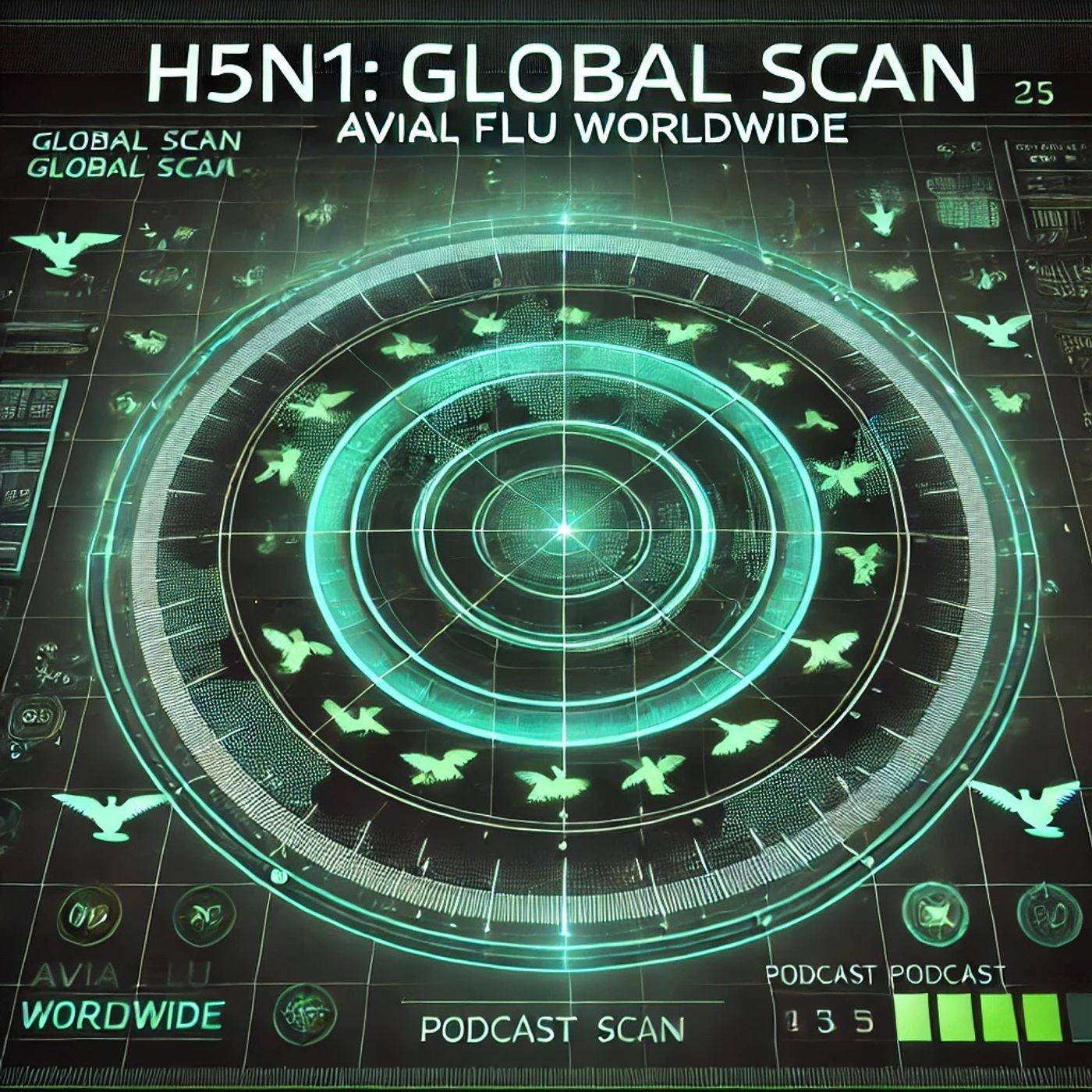Podcast Episode Details
Back to Podcast Episodes
H5N1 Avian Flu Spreads Globally Raising Pandemic Fears Amid Unprecedented Outbreaks in Birds Mammals and Humans
This is H5N1 Global Scan: Avian Flu Worldwide. I’m your host, and today we bring you an urgent briefing on the ever-evolving threat of H5N1 avian influenza across the globe.
Since 2020, H5N1 highly pathogenic avian influenza has become a continent-spanning concern. According to the European Centre for Disease Prevention and Control, Europe has seen over 360 outbreaks between March and June 2025, with cases detected in wild and domestic birds across 24 countries and occasional spillover into mammals and humans. Recent reports from the World Health Organization highlight cases from every continent except Australia. Throughout 2025, human and animal infections have been recorded from the United States and Canada, across Europe, and into Asia, Africa, and Latin America.
In North America, the US reported its first human fatality from H5N1 in early 2025, after exposures linked to backyard poultry and wild birds, while Canada recorded an unusual cluster involving severe respiratory symptoms. These events prompted mass poultry culls—in the US, over 20 million chickens were culled late last year, resulting in egg shortages, echoing similar disturbances in Mexico and throughout the Americas.
Turning to Asia, Southeast Asian countries such as Cambodia and Vietnam have experienced recurring fatal cases, primarily associated with rural poultry exposure. Genetic sequencing in Cambodia revealed novel viral recombination between distinct H5N1 lineages, heightening concerns about mutation and adaptation. China, meanwhile, continues extensive genomic surveillance, confirming hundreds of cases in migratory wild birds that underscore the virus’s broad reach and ability to follow bird flyways across continents.
Africa continues to battle persistent outbreaks among poultry and wild birds, according to updates from the Food and Agriculture Organization. Nigeria, Egypt, and South Africa report ongoing losses impacting rural economies and food security. Across Europe, authorities in the UK, France, and Germany underscore the challenge of rising mammalian infections, including outbreaks in sheep and cattle.
The global scientific community has mobilized in unprecedented ways. According to a recent Johns Hopkins review, international research collaboration has led to the rapid sequencing of viral samples and sharing of real-time outbreak data, sparking a cascade of studies on viral evolution and risk to humans. Ongoing projects coordinated by the World Health Organization and the Food and Agriculture Organization include cross-continental surveillance, fast-tracked vaccine research, and expert panels monitoring zoonotic risk.
The WHO, in its September 2025 update, again warned that the high mutation rate of H5N1 and its growing host range raise the possibility of pandemic emergence. In 2024 and 2025, it coordinated global stockpiling of antivirals, while the FAO focuses on animal vaccination campaigns and guidance for safe poultry husbandry. Still, access and policy vary: while the EU and US have expanded animal and occupational vaccination, many Asian and African countries rely on movement restrictions and agricultural compensation plans.
International trade suffers heavy impacts. Animal health regulations trigger poultry bans and export restrictions, hitting farmers and global food chains already stressed by climate and economic shocks. Cross-border migratory birds complicate eradication efforts, making regional coordination critical.
As of late 2025, commercial vaccine efficacy trials are underway in North America and Europe, with new candidate vaccines targeting prevailing H5N1 strains. However, widespread vaccinations remain limited and public health guidance stresses continued surveillance.
Every nation faces choices: mass culling versus vaccination, strict movement bans versus continuity of trade, and all must remain vigilant in surveillance and resp
Published on 1 week ago